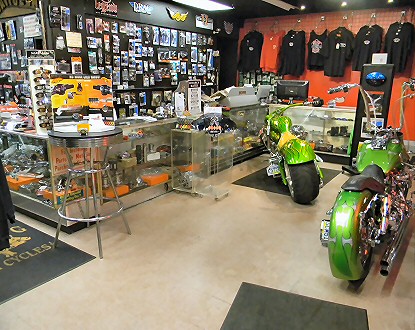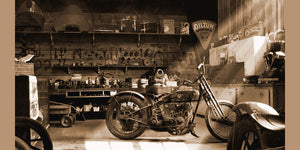Your Go-To Motorbike Shop for Top Quality Parts and Accessories
Your Go-To Motorbike Shop for Top Quality Parts and Accessories
Blog Article
A Comprehensive Check Out Bike Parts: What Every Rider Ought To Know
A comprehensive understanding of motorcycle components is not merely helpful however critical for any type of motorcyclist intending to maximize efficiency and safety and security. Each element, from the engine's detailed functions to the integrity of brake systems, plays an essential duty in the total experience and capability of the bike.
Understanding the Engine
The engine, commonly considered the heart of a motorcycle, is a complex setting up of parts that work in consistency to transform fuel into motion. At its core, the engine's key function entails the combustion process, where air and gas mix and stir up within the cylinders, leading to controlled surges that drive the pistons. These pistons go up and down, converting chemical energy right into mechanical power, which consequently turns the crankshaft, ultimately powering the bike.

Recognizing the intricacies of a motorbike engine is vital for bikers and enthusiasts alike. It not just supplies insight right into exactly how motorcycles accomplish their impressive power and rate however likewise aids in reliable upkeep and troubleshooting, guaranteeing long life and integrity when traveling.
Suspension Equipments
While the engine powers the bike, the suspension system plays a vital duty in ensuring a controlled and smooth experience. The shock absorber is in charge of taking in shocks from the road surface area, maintaining tire contact, and providing security throughout cornering and braking. It consists of two primary components: the front forks and the rear shock absorbers.
Front forks are typically telescopic, consisting of a spring and wetting mechanism. The springtime presses and prolongs to take in bumps, while the moistening mechanism manages the motion to stop extreme bouncing. This mix makes sure the front wheel stays touching the roadway, providing premium handling and convenience.
The back suspension, typically a monoshock or twin-shock setup, functions similarly to the front suspension however is customized to sustain the motorbike's weight and motorcyclist - motocross parts nz. It handles back wheel movement, adding to the bike's total equilibrium and responsiveness
Shock absorber can be adjustable, enabling cyclists to tweak preload, compression, and rebound setups according to individual preferences and riding conditions. This adjustability boosts efficiency by enhancing the bike's interaction with varied terrains. In recap, an efficient suspension system is essential for rider convenience, safety and security, and the motorcycle's taking care of expertise.
Brake Elements
Quiting power is an essential element of bike safety and security, and it pivots on the effectiveness of the brake parts. The key components of a bike's braking system consist of the brake pads, calipers, rotors, and master cyndrical tube. motox parts nz. Each of these elements plays a vital duty in ensuring efficient braking performance
Brake pads are vital as they create the necessary friction against the rotors to slow down or stop the bike. Constructed from materials such as sintered metal or natural composites, the choice of brake pad product substantially impacts efficiency and longevity. Calipers, housing the brake pads, use stress to the pads when the brake bar is involved, assisting in contact with the blades.
The blades, normally made from stainless steel or actors iron, are installed to the wheels and function as the surface versus which the brake pads press. Their design, consisting of diameter and density, affects warm dissipation and stopping power. The master cylinder, connected to the brake bar, produces hydraulic pressure transferred via brake lines to the calipers, guaranteeing consistent braking force.
Normal maintenance and assessment of these elements are important for optimum performance, avoiding wear and guaranteeing motorcyclist safety on the road.
Tire Fundamentals
Beyond preserving durable braking systems, making sure ideal tire performance is just as significant for motorcycle safety and security and effectiveness. Tires are the single get in touch with factor between the bike and the roadway, making their condition critical in handling, security, and general ride quality. Selecting the proper tire kind is crucial, as it straight best motorcycle riding gear affects traction and efficiency. Options vary from visiting to sport tires, each made to fit details riding styles and conditions.

Furthermore, consider the tire's age. Rubber compounds weaken over time, even if walk appears sufficient. Inspect the sidewall for the DOT (Department of Transportation) code to identify the tire's age. Typically, substitute is encouraged every 5 years, no matter wear. Spending attention in these tire fundamentals not just enhances efficiency however also considerably boosts riding safety and security.
Electric Systems
In the world of motorcycle maintenance, the electrical system plays a critical function in making sure reputable performance and cyclist security. This elaborate network encompasses crucial parts such as the battery, alternator, starter motor, and circuitry harness. Each component is important for the smooth operation of the motorcycle, from ignition to lighting and interaction with numerous sensors.
The battery works as the heart of the electric system, supplying the necessary power to begin the engine and operate devices. Routinely examining the battery's voltage and terminals for rust is important to avoid unexpected failings. The generator, on the other hand, charges the battery while the engine is running, guaranteeing a constant power supply.
The starter electric Check This Out motor is liable for initiating engine operation, transforming electrical power right into mechanical power. To preserve it, riders need to take notice of any uncommon sounds or difficulties during startup. At the same time, the circuitry harness functions as the vehicle's nerves, linking all electric parts. Ensuring that the cords are undamaged and cost-free from damage is necessary for preventing short circuits and ensuring functionality.
Verdict

Stopping power is a fundamental aspect of bike safety and security, and it pivots on the efficiency of the brake components. The primary components of a motorcycle's braking system consist of the brake pads, calipers, blades, and master cylinder.Brake pads are necessary as they develop the more required friction against the blades to reduce down or stop the bike.Beyond keeping durable stopping systems, making certain optimal tire performance is just as considerable for bike security and effectiveness.In the world of motorbike maintenance, the electrical system plays a vital role in ensuring trustworthy efficiency and biker security.
Report this page